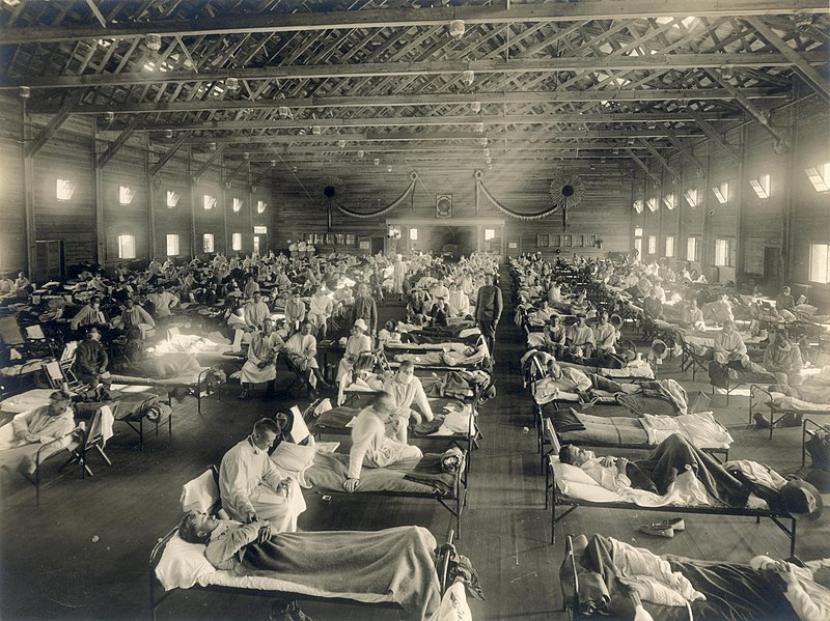Before Covid-19, the world experienced a long history of pandemics, one of which was the Spanish Flu
REPUBLIKA.CO.ID, JAKARTA – Before the new type of corona virus spread across national and world borders in almost the past year, the world had experienced a long history of pandemics. One of them is the Spanish flu epidemic.
According to University of Indonesia historian Tri Wahyuning M Irsyam, this condition pandemic Covid-19, which is currently sweeping the world, is similar to a pandemic Spanish flu in 1918-1919.
The disease also plagued Indonesia, which at that time was called the Dutch East Indies. The colonial government routinely traveled by car to socialize how deadly the flu virus was and residents were encouraged to stay at home and maintain cleanliness.
Tri said that at that time there were different points of view between the colonial government and the Dutch East Indies community in responding to the Spanish flu.
“People see that the disease originates from nature such as dust, wind, and others. Meanwhile, the colonial government saw that the source of transmission came from outside, namely from immigrants who were carriers of the virus, “he said.
Tri explained that in the early days of the spread of the Spanish flu, almost no government or country in the world was ready to respond. This unpreparedness can be seen from the slow handling.
When the disease began to plague, with some people starting to show certain symptoms, the top officials of a number of countries seemed to ignore the phenomenon that occurred in society.
Likewise with the Dutch East Indies colonial government. When there was a report from the regions via telegram stating that there had been many victims, including in Bali and Banyuwangi, the report was held up for months at an institution that is administratively equivalent to the state secretariat.
“Because they did not get a response, the colonial government in the regions finally panicked and left it to the people to act on their own,” said Tri. He added that the people of the Dutch East Indies relied more on traditional medicines such as jamu to recover.
Infecting about 500 million people – or a third of the world’s population at that time – with an estimated 50 million deaths, the Spanish flu has been called the worst disease outbreak in the 20th century.
The Spanish flu is caused by the H1N1 virus with genes that come from birds. Although there is no universal consensus on where the virus originated, it spread around the world during 1918-1919.
In the US, the virus was first identified in military personnel in the spring of 1918. Virus then spread throughout the world, through shipping and trade routes throughout North America, Europe, Asia, Africa, Brazil, to the most remote islands in the Pacific.
Although the H1N1 virus from 1918 has been synthesized and evaluated, the properties that make it so damaging are not well understood.
There is no vaccine to protect people from influenza infection, nor is there an antibiotic to treat secondary bacterial infections that can be associated with influenza infection. Under these circumstances, control efforts around the world are limited to non-pharmaceutical interventions such as isolation, quarantine, good personal hygiene, use of disinfectants, and restrictions on public gatherings – which are applied unevenly.
Most people infected with the Spanish flu die quickly after developing symptoms, often with acute bleeding into the lungs or pulmonary edema, in less than five days.
According to records of the National Center for Biotechnology Information, the US National Library of Medicine, hundreds of autopsies performed in 1918 indicated that people’s deaths were caused by pneumonia and respiratory failure.
These findings are consistent with infection by a well-adapted influenza virus capable of rapidly replicating throughout the respiratory tract.
The United States Centers for Disease Control and Prevention (CDC) noted a high mortality rate among people aged less than 5 years, 20-40 years, and over 65 years of age.
The high mortality rate in healthy people, including the 20-40 year age group, is a unique feature of this pandemic. The mortality rate at ages 15 to 34 due to influenza and pneumonia was 20 times higher in 1918 than in previous years
Stanford University noted, this influenza pandemic caused a drastic reduction in life expectancy globally. In the US alone, the effects are so severe that average life expectancy is depressed by 10 years.
The Spanish flu broke out at the end of World War I, when nations had struggled to cope with the effects and costs of war.
Growing nationalism has led people to accept government regulations, which have allowed health authorities to step in and implement restrictive measures to contain the pandemic.
Not from Spain
Although called the Spanish flu, the H1N1 virus that spread globally in 1918-1919 did not originate in that European country.
According to a number of sources, including the scientific online publication Our World in Data, this influenza outbreak was not limited to Spain and did not even originate there.
It is named so because Spain was a neutral party in World War I (1914-1818), which means freely reporting the severity of the pandemic, while the countries that are fighting try to hide reports of how influenza is affecting their populations, also to keep morale and invisible weak in the eyes of the enemy.
The origins of the deadly flu disease are unknown amid much speculation.
Several allied countries saw the epidemic as a tool of German biological warfare. Many also think that the disease is the result of trench warfare, the use of mustard gas, and the smoke produced from the war.
A national campaign has even begun to use war-ready rhetoric against this new, microscopic enemy.
In the case of the 1918 Spanish flu, the world initially believed that it had stopped in the spring of 1919, but had spiked again in the early 1920s.
Like other types of flu, this flu may become more active in the winter months. because people spend more time indoors closer to one another, says Howard Markel, doctor and director of the Center for the History of Medicine at the University of Michigan.
The flu “tends to subside when it gets cold, but no one knows why,” Markel said as TIME reported.
By the mid-1920s, however, the deadly strain of flu had actually waned enough that the pandemic was ending in many places, although there were no dramatic or suggestive statements that the end had come.
“The end of the pandemic happened because the virus circulated around the world, infecting enough people that the world’s population no longer had enough susceptible people so the virus didn’t develop into a pandemic once again,” said medical historian J. Alexander Navarro, Assistant Director of the University’s Center for Medical History. Michigan.
“When enough people gain immunity, the infection will slowly die because it is more difficult for the virus to find new susceptible hosts,” he said.
However, the end of the 1918 pandemic was not just the result of so many people being infected that immunity was widespread.
The imposition of social restrictions is also key. Public health calls to curb the spread of the virus that causes the Spanish flu are very similar to those imposed in many countries today to combat the Covid-19 pandemic.
The global community is encouraged to stay healthy through campaigns promoting wearing masks, washing hands frequently, quarantining and isolating patients, as well as closing schools, public spaces and non-essential businesses.
All these steps are designed to bypass the virus spread route.
source: Between
– .


